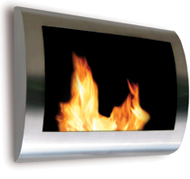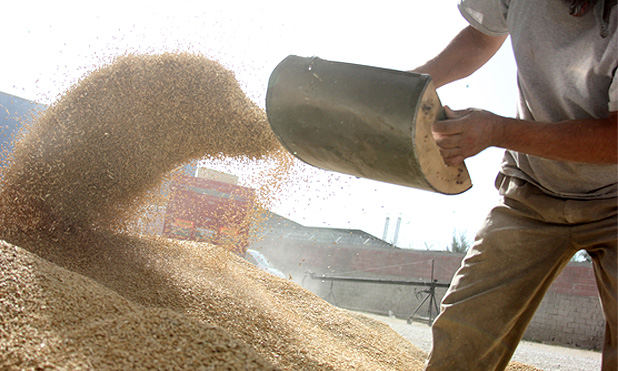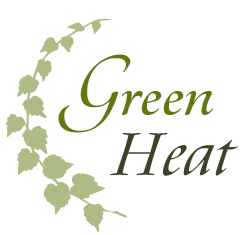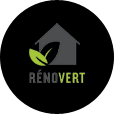
Buying a High-Efficiency Wood-Burning Appliance
February 2018If you are upgrading your old wood-burning system or are planning to purchase a new wood-burning appliance, you have many options. You might consider a wood stove, a pellet stove or a fireplace, or if your house is large, maybe even a wood furnace.
You should consider size, shape, colour and features. But perhaps the most important decision you will make is whether to step up to one of the new, advanced wood-heating appliances.
New models for wood stoves, fireplaces and fireplace inserts feature improved safety and efficiency. The best choices are appliances labelled for safety by recognized testing and certification agencies. Wood-burning heating appliances should also be certified as low-emission according to U.S. Environmental Protection Agency (EPA) standards, which are accepted in Canada.
Canadian manufacturers have an international reputation as designers of some of the most effective wood-burning appliances in the world. Although these new units usually cost more than older wood burners, there are many reasons why getting a new system is money well spent.
Burn Less Wood
Advanced-combustion high-efficiency wood-burning appliances burn up to a third less wood while generating the same amount of heat, which means savings in labour and costs.
Safer and Less Maintenance
When your chimney is caked with creosote, your risk for chimney fires increases substantially. However, when installed and used correctly, certified clean-burning appliances significantly reduce the risk of chimney fires. Their advanced combustion systems burn the smoke inside the firebox, so less creosote forms in the chimney. As a bonus, you save on chimney-cleaning costs. For conventional systems that need cleaning two or three times each heating season, costs can be significant.
Regardless of the type of wood-burning appliance you purchase, it and its chimney should be professionally installed, and they should be inspected and cleaned at least once a year by a technician certified under the Wood Energy Technical Training (WETT) program or, in Quebec, by the Association des professionnels du chauffage (APC). These certified installers and chimney sweeps have gone through a rigorous training program that is recognized by the industry and by the Government of Canada.
When replacing your old, inefficient wood-heating appliance, be sure to dismantle it and/or send it to your local recycling facility or ask if your retailer will recycle the appliance in order to prevent it from being used again.
Better for the Environment
Emissions from wood smoke can be reduced indoors and out by learning to burn more efficiently and by improving your wood-burning practices. Replacing your existing wood burner with a new-technology appliance that meets EPA and Canadian Standards Association (CSA) emissions standards can help to further reduce the emissions of pollutants by up to 90 percent.
More Convenient to Use
Advanced-combustion wood-burning units produce a more stable fire, so you spend less time fiddling with the controls. Remember the most important rule: Never let the fire smoulder. As long as there is solid wood in the firebox, there should be active flames. Without flames, smoke will escape unburned, reducing efficiency and increasing pollution. With advanced systems, you can achieve a reliable overnight burn while maintaining flaming combustion and still have enough charcoal in the morning to kindle a new fire.
Extending a Fire
To achieve a long-lasting fire that will heat the house overnight or while you are away, rake the coals toward the air inlet and use larger pieces of wood placed compactly in the firebox. Placing the pieces close together prevents the heat and flames from penetrating the load and saves the buried pieces for later in the burn cycle. Fully open the air inlets for 5 to 20 minutes, depending on the size of the load and the moisture content of the fuel. When the outer pieces have a thick layer of charcoal, reduce the airflow in stages to the desired level.
With some of the new highly efficient combustion stoves, you may have to alter this procedure slightly. Read the manufacturer’s instructions and experiment. For example, some designs require you to make a channel through the ash pit from front to back, underneath the wood.
Advanced Technology Options
Free-Standing Wood Stoves
New wood-stove models feature improved safety and efficiency. The best choices are appliances labelled by the Underwriters’ Laboratories of Canada (ULC) or another testing and certification body for safety. They should also be certified to be low-emission according to EPA standards. Smoke is the source of creosote, and older uncertified stoves and fireplaces release 40 to 80 grams of smoke per hour; new EPA-certified stoves produce only 2 to 5 grams of smoke per hour.
High-Efficiency Fireplaces
If you are looking for a new fireplace installation, you can now combine the beauty of a fireplace with the heating power of a wood stove by selecting one of the new factorybuilt fireplaces. Advanced-combustion high-efficiency fireplaces are becoming as effective for space heating as new efficient wood stoves. They use the same internal combustion features to reduce smoke emissions and boost efficiency.
Some models can function as central heating systems, if there are ducts to distribute heated air throughout the house.
Fireplace Inserts
A fireplace insert is like a wood stove but is designed to be installed within the firebox of an existing masonry fireplace. Municipal installation codes now require that a properly sized stainless-steel liner be installed from the insert flue collar to the top of the chimney. The result is better performance and a safer system.
Your new insert should be certified for low emissions, so that you get the full benefits of today’s advanced woodburning technologies.
Pellet Stoves
A pellet stove is a heating appliance that burns wood pellets. Pellet fuel, a renewable resource, is made of compressed wood and other biomass wastes. Most pellet stoves can be easily vented through a wall, unlike log-burning stoves.
EPA-certified pellet stoves are some of the cleanest-burning heating appliances available today and deliver high overall efficiency.
Masonry Heaters
Although it might appear similar to a masonry fireplace, a masonry heater is completely different in design, construction and operation. The core of the heater, consisting of the firebox and heat exchanger, has a series of precast components made of high-temperature brick materials.
Masonry heaters are not low-emissionscertified because most are custom designed and must be built by skilled heater masons to meet the standards found in building codes for conventional fireplaces.
Certified low-emission wood-heating units are not available for the following appliance categories:
– cookstoves
– free-standing fireplaces
– central wood furnaces and boilers
– outdoor boilers
Source: Canren.gc.ca



























